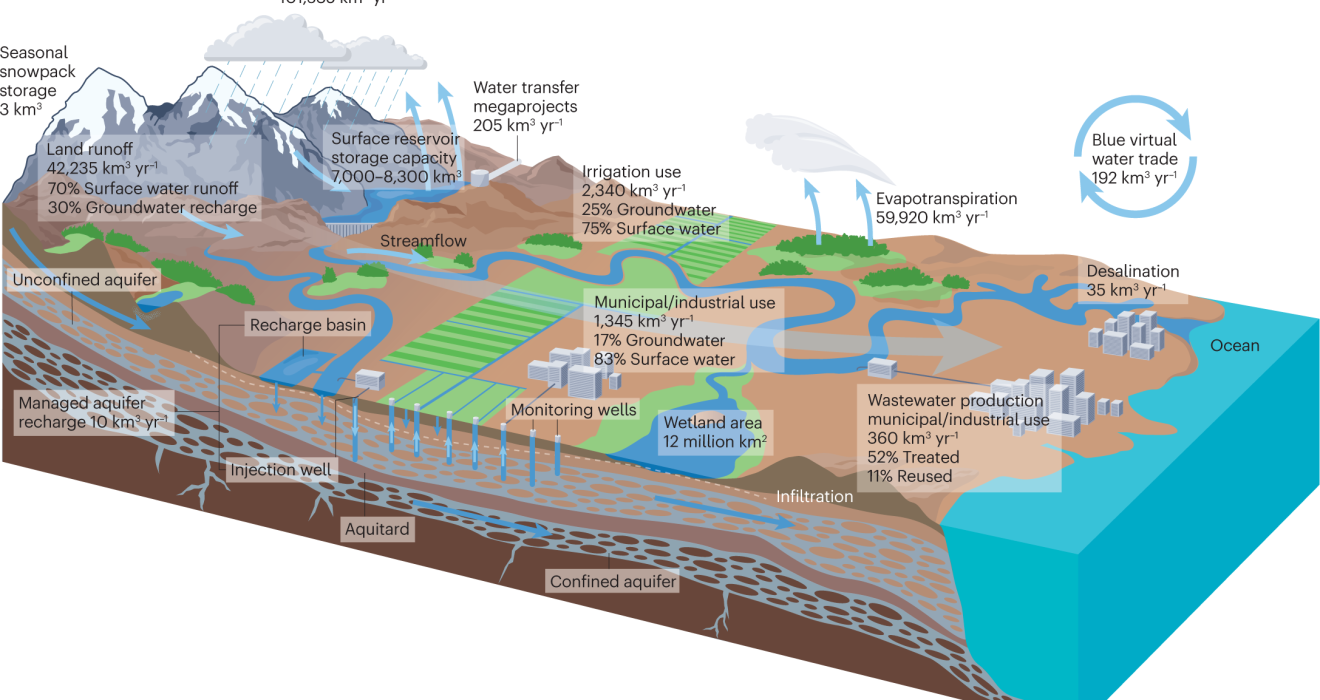Groundwater, essential for sustaining life, faces an imminent and widespread threat across the globe. The unchecked extraction of water for agricultural needs and the rapid expansion of urban areas have triggered the depletion of vital groundwater aquifers. This perilous trend jeopardizes the primary source of potable water for over 95 percent of the world’s population. The ramifications of this depletion are severe, with nations such as Iran grappling with acute humanitarian crises fueled by the scarcity of water.
However, amidst this crisis, a recent study published in the esteemed journal Nature emerges as a beacon of hope. This groundbreaking research sheds light on potential solutions to not only safeguard but also rejuvenate dwindling groundwater levels. By delving into these solutions, there is a glimmer of optimism that the dire trajectory of depleting aquifers can be altered. This scientific endeavor becomes a cornerstone in the global pursuit of securing sustainable water resources, offering a glimpse of a future where the looming water scarcity crisis is effectively mitigated.
Research Insights
The groundbreaking study, spanning 40 years and analyzing data from 170,000 groundwater wells globally, presents a ray of hope amid the gloom. The research, led by Scott Jasechko from the University of California, Santa Barbara, identifies key policies that can prevent water tables from crashing and, remarkably, facilitate recovery. These solutions, though challenging and economically demanding, offer prospects for regions grappling with significant groundwater declines.
Mapping Aquifer Changes
To understand the global scenario, researchers collaborated with governments and compiled data from over 40 countries, representing more than 75 percent of global groundwater usage. The resulting map of aquifer changes pinpointed areas where groundwater levels were recovering. Subsequently, the researchers delved into these regions, collaborating with local governments to comprehend the strategies employed.
Diversifying Water Sources
The first solution, albeit seemingly obvious, emphasizes the need to explore alternative water sources when groundwater is depleting. Albuquerque, New Mexico, faced a similar situation when studies revealed their aquifers held less water than believed. In response, the city turned to tributaries of the Colorado River, investing in a treatment plant and pipelines to import river water. The success of this strategy prompted the Biden administration to allocate over $8 billion for similar projects across the country. However, the high costs underscore the necessity of federal support.
Managed Aquifer Recharge
The second approach involves replenishing aquifers through managed aquifer recharge. This entails injecting water into depleted rock beds to restore groundwater levels. In Tucson, Arizona, this strategy utilized Colorado River water stored underground to combat declining water levels, creating a reserve for extreme drought conditions. While having a substitute surface water source is advantageous, some regions have implemented innovative approaches. In central Spain, recharge pilot projects use rooftop runoff and reclaimed wastewater to replenish aquifers.
Stringent Pumping Restrictions
In addressing the critical issue of declining groundwater levels, Bangkok, Thailand, has implemented a notable solution through the imposition of stringent pumping restrictions. Confronted with the ominous threat of land subsidence, the city took bold steps to curb industrial development and halt new construction projects. While these measures necessitated sacrifices in terms of potential economic growth, the outcomes were undeniably positive. The strict restrictions resulted in the recovery of the water table and, remarkably, the restoration of some sunken land.
This case underscores a crucial aspect of groundwater conservation – the need for strategic trade-offs. In Bangkok’s scenario, prioritizing environmental preservation over unchecked economic expansion proved indispensable. The success of this approach not only highlights the adaptability and resilience of aquifer systems but also serves as a valuable lesson for other regions facing similar challenges. It demonstrates that safeguarding vital water resources may require difficult choices, emphasizing the imperative for balancing economic aspirations with the imperative to prevent irreversible environmental degradation.
Economic Costs and Political Challenges
Despite the efficacy of these solutions, there are significant economic costs associated with importing surface water and implementing restrictions on groundwater usage. The political challenges further complicate the adoption of these measures. However, the study underscores that these solutions are imperative to mitigate the severe consequences of aquifer depletion. Residential wells going dry can render neighborhoods uninhabitable, as witnessed in Arizona, while agricultural well depletion, as seen in Iran, jeopardizes regional and national food supplies.
Conclusion
In conclusion, the current global groundwater crisis, fueled by unrestrained pumping and urban expansion, finds a ray of hope in recent research. This study not only identifies successful strategies for protecting and revitalizing aquifers but also underscores the pressing need for their immediate implementation. The repercussions of aquifer depletion reach far beyond environmental damage, directly impacting human livelihoods and overall well-being.
Despite the challenges lying ahead, the potential for recovery and the establishment of sustainable water management practices make the endeavor undeniably worthwhile. The urgency of adopting these solutions cannot be overstated, considering the far-reaching consequences on both a local and global scale. The looming threat to freshwater resources necessitates a paradigm shift in how nations approach water scarcity.
As countries grapple with the daunting reality of diminishing water supplies, the adoption of these identified solutions becomes not just a choice but a critical imperative. Embracing these strategies is paramount for steering towards a future where the global community can enjoy a sustainable and abundant freshwater supply, ensuring the well-being of both the environment and its inhabitants.

